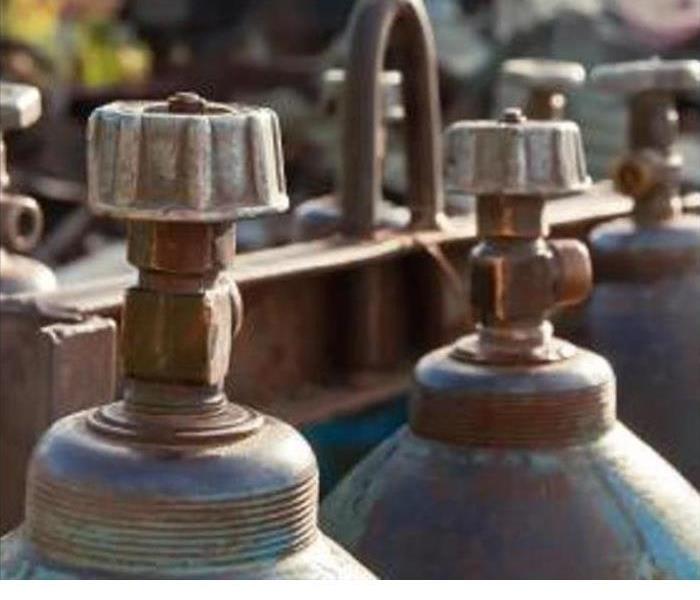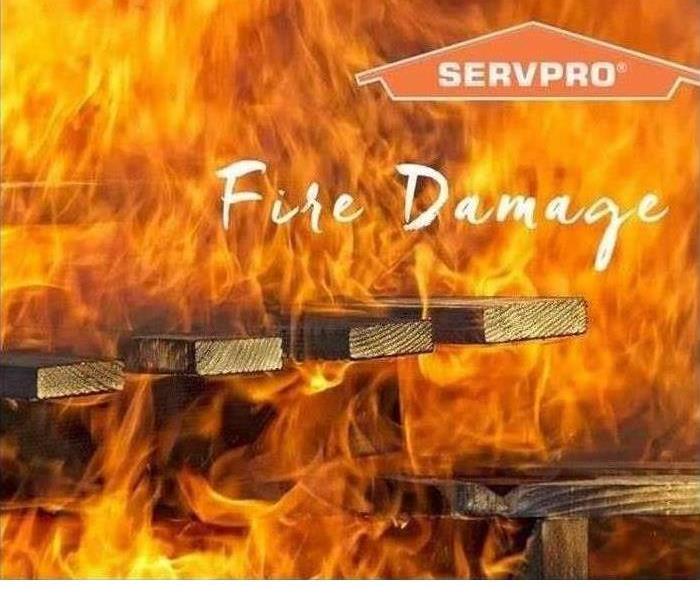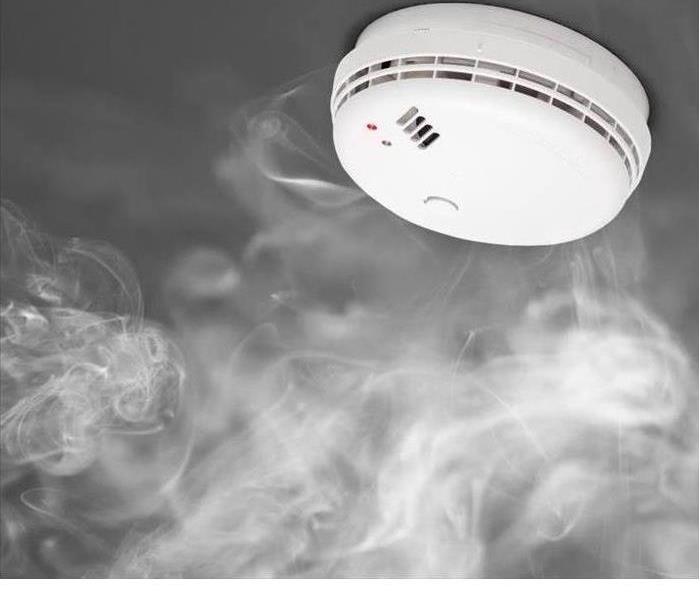Recent Fire Damage Posts
Is Minnesota At-Risk for Fires This Spring?
3/6/2024 (Permalink)
In a surprising turn of events, Minnesota is facing snowless winters, raising concerns about heightened fire danger in the region. The absence of the protective snow layer leaves the landscape vulnerable, increasing the risk of wildfires in both urban and natural areas. Dry conditions, combined with gusty winds and low humidity, create the perfect conditions for wildfires to spread rapidly. Grasslands, forests, and even urban areas become vulnerable, posing a threat to both property and lives.
Amidst these challenges, SERVPRO® emerges as a valuable ally to the people of Stillwater, Mahtomedi, and Oakdale. With expertise in fire damage restoration, SERVPRO can assist residents and business owners in preparing for the worst. Their services include developing Emergency Ready Plans for businesses, educating business owners and homeowners, and offering timely responses to fire-related incidents.
The absence of snow in Minnesota is not merely a matter of aesthetics but a concerning trend with far-reaching consequences. The increased fire danger poses a significant threat to both the environment and public safety. Fortunately, in the event of a fire, SERVPRO stands ready to assist in any way possible.
What To Do if There Is a Gas Leak in Your Home
8/31/2022 (Permalink)
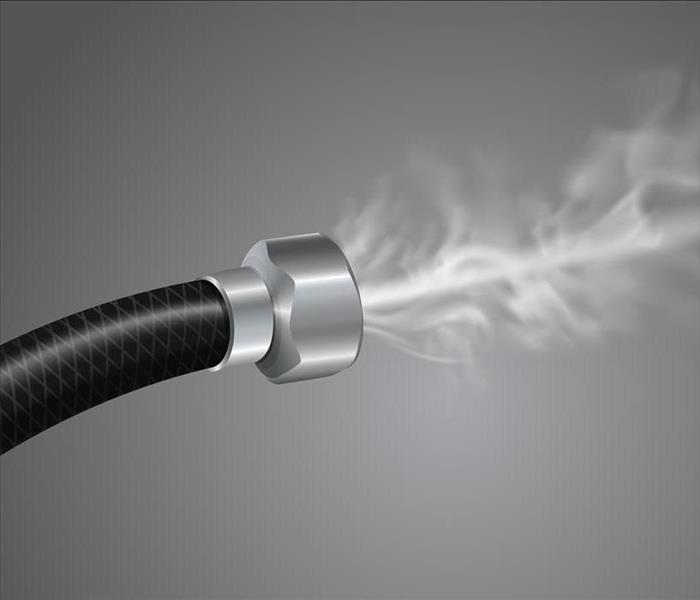 In the event of a gas leak, it's important to know where your gas meter is located.
In the event of a gas leak, it's important to know where your gas meter is located.
What to Do if Your Home Has a Gas Leak
Smelling gas within your home can be disastrous if you don't know how to react. Here are five tips to help minimize the risk of a gas fire sparking in your Bayport, MN, home.
1. Check the Stove
For homes with a gas-burning stove, this is often the culprit of a gas scent wafting. If you are not actively cooking but smell gas, check the stove to make sure a burner wasn't left on. Always be mindful of shutting the stove off after cooking, as combustion is always possible and creates destruction only fire damage restoration professionals can repair.
2. Keep Lights Off
Do not turn on any lights in the home if you suspect a gas leak. They could cause a spark that could lead to a gas explosion in severe cases. If you need light, use a flashlight instead.
3. Open Doors and Windows in the House
Proper airflow and ventilation are important in reducing the risk of a gas fire. Therefore, if you smell gas, create more circulation for it to flow rather than be contained in one space. Opening up the doors and windows of your home promotes gas movement rather than collection.
4. Shutoff Gas Meter
In the event of a gas leak, it's important to know where your gas meter is located and how to shut it off. This will stop the flow of gas and can prove critical for keeping you and your family safe from harm.
5. Evacuate Home Upon Smelling Natural Gas
The best way to ensure safety from a potential gas fire is to evacuate your home if gas odors are present. Make sure everyone in the household is accounted for and gather a safe distance away from the house in case an explosion occurs.
If you smell gas within your home, act accordingly. Check your stovetop, keep lights off, open windows, turn off the gas meter and evacuate for your safety.
If a Fire Didn't Cause Much Damage, Should You Fix It Yourself?
6/4/2022 (Permalink)
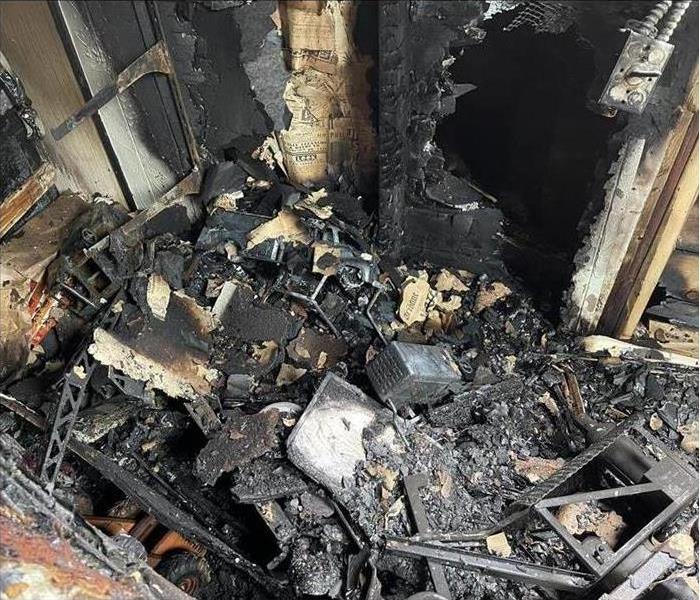 A fire loss should be taken seriously to avoid bigger problems.
A fire loss should be taken seriously to avoid bigger problems.
Should You Repair a Fire If It Didn't Cause Much Damage?
A fire on your commercial property, even if there wasn't much fire loss, can put your business at a bit of a standstill. If the fire was small and caused minimal damage, you may be tempted to make the repairs yourself or ignore it for a while for the sake of your company. There are some reasons you should consider not doing this.
You Should Not DIY
Repairing fire and smoke damage can become dangerous without the proper PPE or protocols. You could even end up doing more harm than good. If you don't know exactly what you are doing, it may not get done properly and damage will persist. Although it may seem like a big deal, you should trust a professional fire remediation service.
water damage from firefighting efforts can eventually turn to mold
smoke damage can degrade electronics
specific techniques are required to remove soot from upholstery and documents
air quality is something that needs to be tested with specialized tools
You Are Probably Covered
Most insurance policies that protect against fire also include coverage for partial fire loss. Before you move anything, be sure to document everything you can with pictures and written lists. Partial losses are sometimes low on the priority list of insurance adjusters, so be sure to follow up frequently if you do not hear from them right away.
You Might Have More Damage Than You Think
Not all damage is immediately visible. Areas like the walls, siding, roof, windows, plumbing, wiring and heating system need a thorough inspection from an expert to truly assess any deterioration. Once damage is found, a professional fire restoration company can help you claim these damages on your insurance, as well.
Even in small doses, fire loss should be taken seriously to avoid bigger problems down the road. Attempting to patch it yourself could be a bad idea for both you and your commercial property. Don't be afraid to reach out to the right people when the time comes.
What Is Business Interruption Insurance and Do You Need It?
3/19/2022 (Permalink)
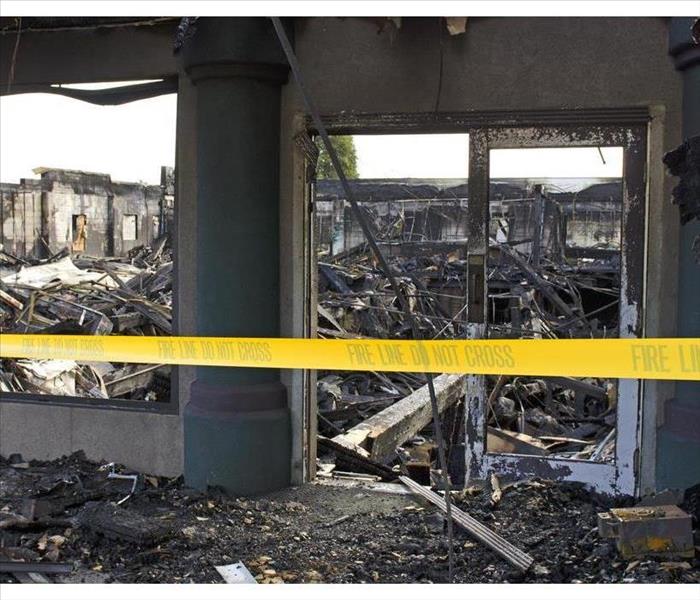 Commercial fire damage in Mahtomedi, MN.
Commercial fire damage in Mahtomedi, MN.
As a business owner, you are forced to weigh the pros and cons of every possible expense before you make an investment. One expense you may question is interruption insurance. Do you need it, or will it end up costing you more than you will save?
The Basics of Business Interruption Coverage
You already have commercial property coverage, so why would you need interruption coverage? Good question. Commercial property coverage insures against damage to your building and its contents due to a covered loss, such as a fire. Depending on your policy, this type of coverage may cover increased expenses that result from fire damage as well as the loss of income. However, what happens if your business is forced to close for an extended period of time while fire restoration is underway, or if your business suffers additional losses after you reopen? That's where interruption insurance comes in. This type of coverage covers the following:
- Loss caused by the slowdown or suspension of your business operations
- Losses accrued during the restoration period
- Losses sustained after resuming operations and that are a result of the fire damage
Business interruption coverage also covers payroll costs during the restoration period. This ensures you can retain your employees while your business is closed. It also covers the cost of taxes, business loan repayments and relocation expenses.
What Interruption Coverage Does Not Cover
Though interruption coverage can be extremely helpful in the event of a loss, it does not cover everything. For instance, it does not cover the cost of utilities that continue to run despite the fact that your business is closed. To ensure you don't get charged with electricity, water, gas or any other utilities while your doors are closed, call your utility companies to have them shut them off.
This type of coverage also does not cover direct property damage. That is what commercial property coverage is for. If the damage is the result of an earthquake or flood, your earthquake or flood policy should cover the cost of damages.
To learn more about what interruption insurance does and does not cover, contact your Mahtomedi, MN, fire restoration team. In addition to providing you with more information, it can help you find appropriate coverage.
Prepare for the Unexpected With a Fire Escape Plan
2/21/2022 (Permalink)
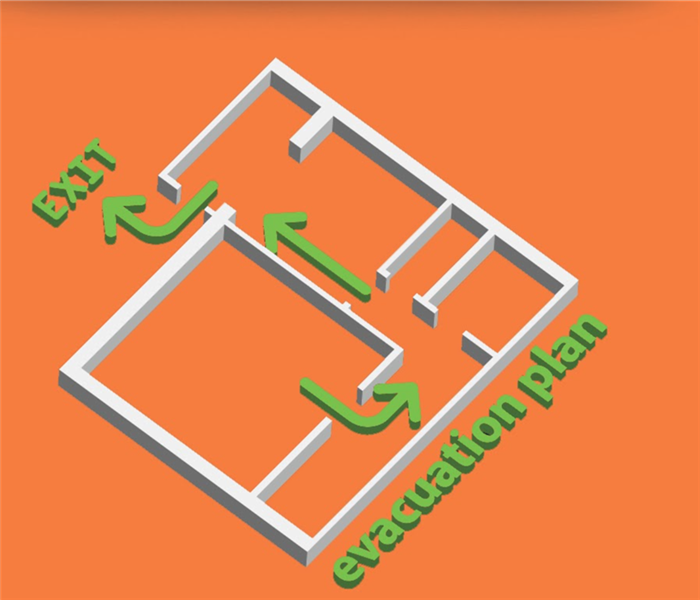 Develop a fire escape plan for everyone in your home.
Develop a fire escape plan for everyone in your home.
Make a Fire Escape Plan to Prepare for the Unexpected
In the event of a house fire, the top priority should always be getting everyone in the house out safely. Although you’ll surely want to save valuable and nostalgic items, it is important to evacuate the home and leave it up to a fire restoration company to preserve what they can. The best way to ensure the safety of all household members in your home in Lakeland, MN, is to prepare with a thorough fire escape plan in place.
Make Sure Your House is Fire Ready
The first step in putting your emergency escape plan into action is to make sure your house is prepared to warn everyone and provide a way out. Here are the main aspects you should check for:
- Make sure you have all the required fire alarms installed with plenty of battery life.
- Ensure any window bars include quick-release mechanisms.
- Keep clutter away from exits, windows, and stairs
- Consider purchasing fire extinguishers
Develop and Practice a Fire Escape Plan
Your next step is to develop a fire escape plan for everyone in your home. Identify a meeting place outside and map out the best method of exit for each individual. It is smart to also come up with a backup plan in case the first exit is blocked. Assign someone to each infant, pet, disabled person, or elderly person.
Explain to everyone how to safely act in the case of a fire including:
- How to check doors
- How to crawl under smoke
- How and when to stop, drop, and roll
- Why they should never go back inside
Make sure everyone knows what emergency number to call, especially the fire department’s number. After discussing the plan, have everyone test out the plan and make changes as needed.
Preparation is key when it comes to safely escaping a fire. Making a fire escape plan that everyone in the family knows is the best way to help everyone make it out of a house fire-safe and sound!
Devices Used to Combat Smoke Damages and Odors
12/31/2021 (Permalink)
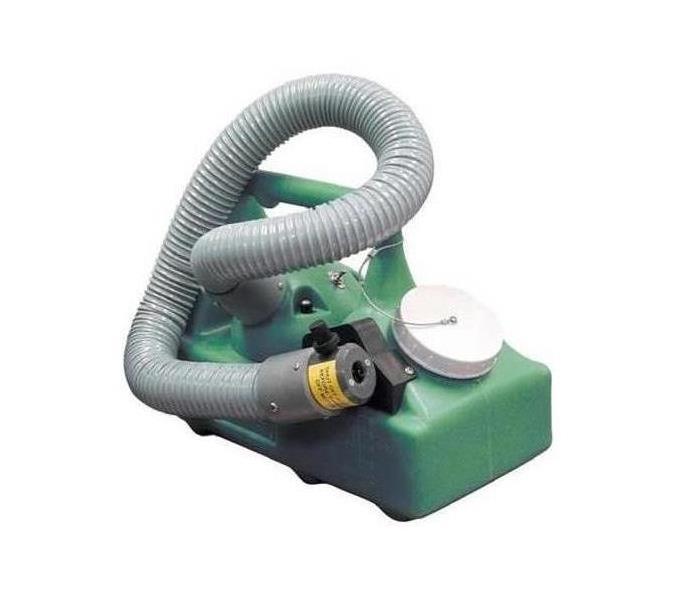 Thermal fogger
Thermal fogger
Smoke Damage and Odor Elimination Devices
After your Bay Port, MN, business has been affected by a fire, you'll learn that not all damages are structural. Some of the longest-lasting damages may include smoke damage. Fortunately, there are several devices professionals could use while smoke cleaning to reduce or eliminate unpleasant odors from your property and furnishings.
Services Provided by Fire Remediation Professionals
Content restoration professionals specialize in dealing with the many types of damage caused by fires and as a result of fire-saving efforts. Some of the methods they use to clean furnishings, equipment, and inventory include:
- Dry and wet cleaning
- Foam cleaning
- Abrasive cleaning
- Immersion cleaning
Once the cleanup is complete, these professionals will turn their attention to stains and odors left by smoke.
Air Filtration Devices
These air purification devices remove contaminants directly from the air. They are generally made of some type of fibrous material that attracts and traps particulates, such as soot, mold, and bacteria. They are a valuable tool for smoke cleaning in rooms or structures affected by contaminants and when high levels of pollutants are present.
Ozone Machines
Ozone generators are another effective tool for dealing with smoke damage. These devices create ozone gasses and kill or remove airborne particulates. They are effective at deodorizing and disinfecting, so the air in your building won't hold onto an unpleasant smoke odor.
Thermal Foggers
This type of device removes odors by recreating the same heat and pressurization that caused the odors initially. Heat is used to vaporize a solution that penetrates into hard-to-reach locations, eliminating smells that are trapped in porous walls or furnishings.
With a variety of tools available to combat the bad smells leftover after the flames are gone, fire recovery professionals can choose the best method for getting your business back on track. Smoke odor damage may not be the first thing that concerns you when fire affects your business place, but it does present a significant challenge to getting back to normal. Smoke cleaning services are a crucial part of a full recovery.
3 Mistakes to Avoid During a Workplace Fire
11/22/2021 (Permalink)
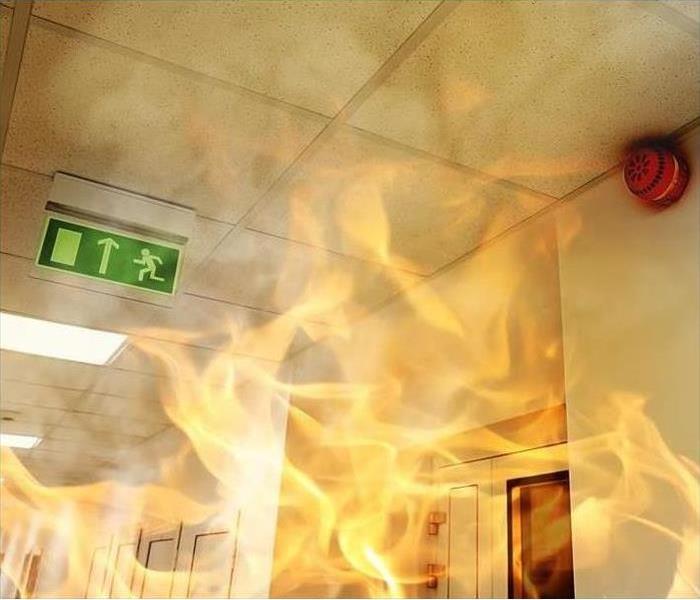 Fire in a building.
Fire in a building.
What Not to Do During a Workplace Fire
Making sure fire extinguishers are accessible and smoke alarms are maintained are crucial steps to take as an employer. If a fire does erupt in your workplace, it’s natural for people to panic. Unfortunately, this can lead to common mistakes that aggravate the situation. To ensure everyone makes it out of the building safely during an emergency, here are a few safety guidelines to remind your staff of during fire training.
Break Windows
Smoke inhalation is a threat to those inside the building. In an effort to access fresh air, some people might open windows or break the glass. However, when oxygenated air from outside rushes in, the intensity of the fire will build more quickly.
As smoke and heat rise, everyone should stay close to the ground and crawl to the exits to avoid fumes. If exits are blocked, put wet towels under the doors to keep out the smoke instead of opening windows.
Fail to Use Emergency Exits
fire extinguishers. When a fire starts, people might try to evacuate the building the same way they got in. However, you shouldn’t open any doors leading to the main corridors, especially if the handles are warm to the touch. Flames could be on the other side of these, and opening them could feed more oxygen to the fire and expose people to smoke.
To keep the fire from spreading, instruct your staff to use only emergency exit doors, stairwells, and fire escapes.
Forget to Alert Others
When they hear the fire alarm protection system, some people may think it’s just a test. If they don’t smell smoke or feel the heat, they might fail to take action.
To protect everyone in the workplace, people who see the flames or smoke should yell “fire” to alert others that it is not a drill. Those trained to use fire extinguishers can try to control the blaze while others call emergency services for help. If anyone in the workplace has mobility difficulties, assign someone to ensure they can get out safely during your safety plan design.
Stay Warm This Winter With These Space Heater Safety Tips
11/3/2021 (Permalink)
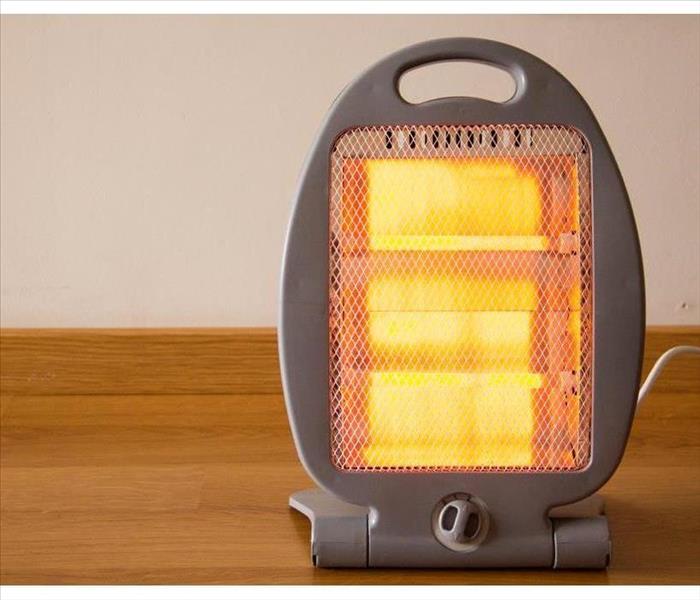 Space heaters can be a great way to stay warm.
Space heaters can be a great way to stay warm.
Tips To Prevent a Burned Space Heater
Space heaters can be a great way to stay warm over the long, cold winter months and save money on heating costs, but they can also be dangerous. Though small, space heaters can wreak havoc if their owners aren't careful. Here are a few safety tips you may want to keep in mind to prevent a burned space heater accident:
- Pick the right place to put it.
- Plug it directly into an outlet.
- Shut off and unplug your heater when it's not in use.
- Perform routine inspections.
If you keep the above tips in mind when heating your home, you should be able to enjoy a nice, cozy and event-free winter.
Pick the Right Floor Space
The number one cause of burned heater accidents is proximity to flammable objects. Curtains, table cloths, blankets, and other fabrics can, when they get too hot, burst into flames. You can prevent this from happening by placing your mini heater in a spot all by itself.
Plug Directly Into an Outlet
Another common cause of burned space heater accidents is overheating via a power source. Space heaters use up a lot of energy. If you use a power strip that cannot support that kind of energy, you risk overheating, electrical shock and fire. Prevent this by plugging your heater directly into a wall outlet.
Shut the Heating Unit Off
When you leave your apartment or house, turn the heater off. You should take extra precautions to do so if you have animals in the home that can knock the heater over.
Maintain Your Heating Unit
Finally, keep your unit clean and free of dust and other pollutants. By regularly wiping down the heater you can ensure that it always performs to maximum capacity and does not go up into flames because it is clogged and overworked.
Burned space heater accidents are, unfortunately, all too common. You can prevent such an accident by taking precautions. If your heater does happen to catch fire, contact your Mahtomedi, MN, smoke cleanup crew for immediate remediation assistance.
44 - How To File an Insurance Claim After a Home Fire
10/17/2021 (Permalink)
 Kitchen damaged by fire in Stillwater, MN.
Kitchen damaged by fire in Stillwater, MN.
Fire Insurance Claim
Suffering a home fire in Stillwater, MN, can be emotionally devastating. You may have lost a lifetime’s worth of possessions and been forced out of your home. As difficult as this time is, it’s important you act quickly to ensure your insurance company pays for the fire restoration process. Follow these basic guidelines to file an insurance claim after a home fire.
1. Document the Damage
Your fire insurance provider will require proof of the damage to your home. Take photographs or videos of everything that was damaged. Don’t just focus on the areas directly affected by the fire. Smoke can cause damage throughout your house and you should document this so that you can be reimbursed for smoke cleaning. You should also try to make a list of everything you lost in the fire.
2. Call Your Provider
Contact your insurance provider as soon as possible. It can take as long as 15 days for a claims adjuster to arrive at your home to inspect the damage. The sooner you file your claim the sooner you can begin the fire restoration process.
If you need funds to pay for basic living expenses during this time, such as a hotel, food, or clothing, you can also request a cash advance from your provider. This comes out of your final settlement, so don’t splurge.
3. Secure Your Home
Your insurance company will only pay for damages caused by the fire, not by damages incurred after the fire. That means if the fire burned a hole in your roof and it rains, they won’t pay for water damage caused by the rain. Most companies specializing in fire damage restoration offer boarding and tarping services. They can secure your home to prevent any further damage.
4. Keep a Record of Your Communications
Filing an insurance claim in Stillwater, MN, can be a complicated and lengthy process. Keep careful records of all your phone calls, emails and meetings, including dates, times and the names of people you spoke with. If there is any dispute about payments for your fire restoration costs, these may come in handy.
Fire Safety Equipment: Five Pieces You Need for Your Home
3/30/2021 (Permalink)
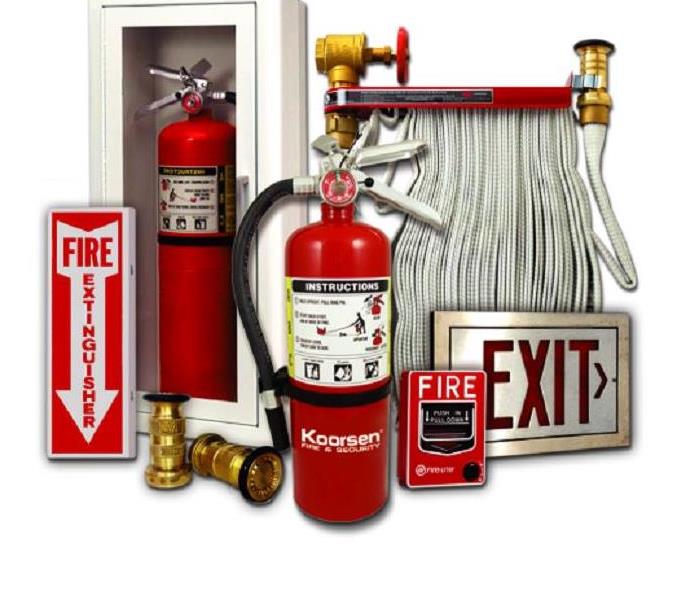 Our homes may be our sanctuaries, but they also present multiple opportunities for fire danger.
Our homes may be our sanctuaries, but they also present multiple opportunities for fire danger.
Our homes may be our sanctuaries, but they also present multiple opportunities for fire danger. An unattended stovetop can result in a kitchen fire, while electrical systems and appliances can overheat. Fireplaces, candles, flammable liquids, and outdoor grills — to name just a few — all add to the risk.
Having the correct fire safety equipment in your house is essential to keep your family safe and your home protected. This article highlights the five most important pieces of equipment needed to safeguard your home and loved ones. The peace of mind that comes from knowing you’re prepared is worth the time, effort, and expense involved.
- Smoke Alarms
This is your first line of defense. According to the Red Cross, the National Fire Alarm Code (NFPA 72) requires all new homes to have inter-connected hard-wired smoke alarms with battery backup. If you don’t have an interconnected system, battery-powered alarms are easily installed. Both types of alarms need to be located on every level of the home with one inside each bedroom.
4 important rules for smoke alarms:
- Never disable them – even if they go off when they shouldn’t.
- Check them once a month using the test feature.
- Replace the batteries at least once a year.
- Replace the alarm every 10 years as older alarms may not perform properly
- Fire Extinguishers
Since most home fires start in the kitchen, you’ll want to put a fire extinguisher in there, at a minimum. But it’s recommended to place them in multiple locations around the house. Since extinguishers from various makers all work differently, it’s a good idea for the adults in the household to get training from the local fire department. Extinguishers should be installed near exits, away from heat sources, and up high enough that kids can’t reach them.
- Sprinkler Systems
While a smoke alarm will detect smoke, an automatic sprinkler system gives you a way of dealing with flames immediately. While you’re waiting on the fire department to arrive, sprinklers can help slow a fire’s progress or can even douse it completely. Moreover, a sprinkler system can prevent deadly gases and smoke from affecting your family and could also extinguish a fire that breaks out while you’re away from home.
- Carbon Monoxide Alarms
There’s a good reason carbon monoxide (CO) is called the “silent killer.” This deadly gas is invisible, odorless, and colorless and even a small amount can be fatal if inhaled for long enough. Install carbon monoxide alarms on each level of your home and outside bedrooms. If the alarm emits its high-pitched warning, get outside as quickly as possible or open windows and doors and take deep breaths of fresh air. CO poisoning can cause headaches, nausea, and tiredness and can be mistaken for flu.
- Fire Escape Ladders
If your home has more than one floor, collapsible fire ladders should be a part of your fire-safety arsenal. Place a ladder where it’s easy to access in every upper-level room in case your evacuation route gets cut off by smoke or fire. Then, have the entire family rehearse the steps they would take to get the ladders out and attached to open windows.
No one wants to dwell on the possibility of their family being in danger or their home being consumed by flames, but this is one situation where being properly prepared could save lives and property. If you haven’t already done so, make an escape plan and go over it with your family. And check your homeowner’s insurance to make sure your policy is up to date with adequate coverage.
4 FAQs on Flammable Gas Safety
3/12/2021 (Permalink)
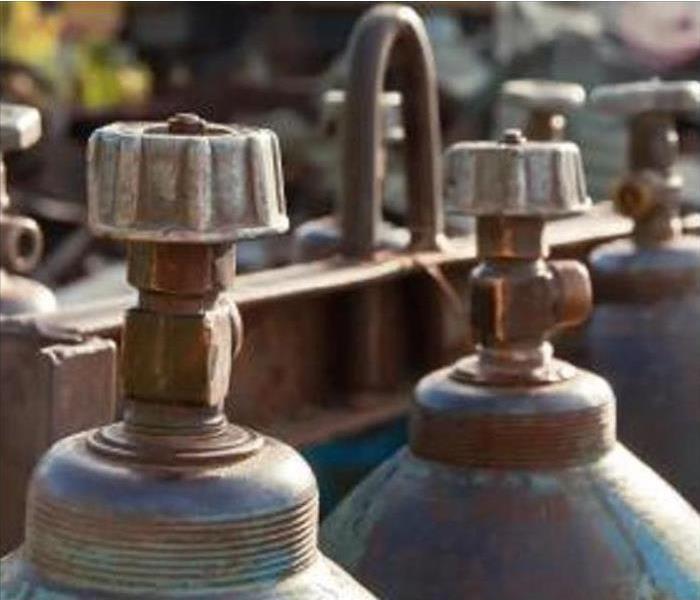 Propane, hydrogen, butane, ethylene, and other flammable, compressed gases present hazards without the right precautions.
Propane, hydrogen, butane, ethylene, and other flammable, compressed gases present hazards without the right precautions.
Propane, hydrogen, butane, ethylene, and other flammable, compressed gases present hazards without the right precautions. While fire safety maintenance will help you avoid trouble, you should also understand how to handle and store gas cylinders. Here’s what to know to keep your facility safe.
Common Questions About Flammable Gases
Can I store containers outdoors?
Yes, as long as the manufacturer's instructions permit outdoor storage. Closely follow the guidelines on all cylinder labels. If a label is missing or damaged, you may need to call the manufacturer.
Cylinders stored outdoors must remain upright on compacted, level surfaces. These should be far away from drainage areas, manholes, or other openings. Use an open-sided enclosure with a weatherproof roof to protect the cylinders from sunlight, snow, and other elements.
What about indoor storage?
Fire safety maintenance. Indoor storage is also possible as long as you follow all ventilation guidelines outlined by the manufacturers. Store the gases in a separate building that has noncombustible structural components that resist fire for at least 120 minutes. The area should also have lightweight roofing and explosion vents.
Keep gases on the ground floor and place electrical wiring outside of the building to further limit the chances of fires and explosions.
What are the best materials for securing the cylinders?
Unrestrained cylinders could roll away or fall, so you must keep them secure. Use specialized chains, straps, and bungee cords. Refer to the label or manufacturer’s instructions for information on how to secure the units.
How should I handle the cylinders?
Inspect all items before handling. Do not handle any cylinder that has dents, severe corrosion, or other visible signs of damage. Avoid contact if you notice grease, oil, solvent, or dirt, which could cause explosions.
Open cylinder valves only with the manufacturer-provided key, and ensure you are working away from all heat sources. You must also have fire safety equipment within reach and follow all other manufacturer’s guidelines, such as opening specific valves if you’re working with an irritating gas
Fire Damage Restoration Process
3/12/2021 (Permalink)
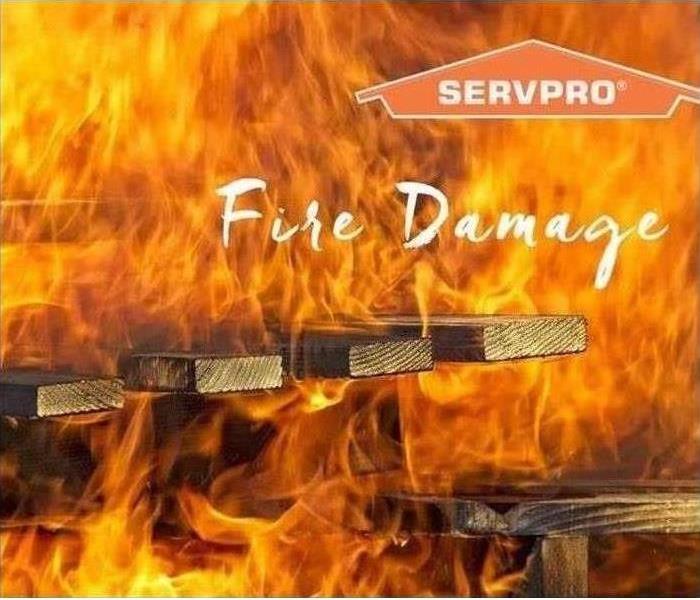 Every fire damage event is a little different, and requires a unique solution.
Every fire damage event is a little different, and requires a unique solution.
Every fire damage event is a little different, and requires a unique solution, but the general process stays the same. The steps listed below illustrate our process for the “typical” fire damage emergency.
Step 1: Emergency Contact
The restoration process begins when you call the SERVPRO Customer Care Center, which is staffed 24 hours a day. Our specialist will ask a series of questions regarding the fire damage event that will help us dispatch the nearest SERVPRO Franchise Professional with the appropriate equipment and resources.
Step 2: Inspection and Fire Damage Assessment
Our Professionals will carefully inspect and test adjoining rooms of your property to determine the extent of the fire, smoke, and soot damage. This step is crucial to developing a plan of action.
Step 3: Immediate Board-Up and Roof-Tarp Service
Fire damage can often compromise windows, walls, and roofs. To maintain security and to protect against further damage, the SERVPRO Franchise Professional can board up missing windows and walls and place tarps on damaged roofs.
Step 4: Water Removal and Drying (if water damage is present)
The water removal process begins almost immediately and removes the majority of the water. They will then use dehumidifiers and air movers to remove the remaining water and complete the drying process.
Step 5: Removal of Smoke and Soot from All Surfaces
The SERVPRO Franchise Professionals use specialized equipment and techniques to remove smoke and soot from ceilings, walls, and other surfaces.
Step 6: Cleaning and Sanitizing
They will clean all of the restorable items and structures that were damaged by the fire. They use a variety of cleaning techniques to restore your belongings to pre-fire condition. They’re also trained to remove odors using industrial air scrubbers and fogging equipment.
Step 7: Restoration
Restoration is the final step—getting your home or business to its pre-fire condition. Restoration may involve minor repairs, such as replacing drywall, painting, and installing new carpet; or it may entail major repairs such as the reconstruction of various areas or rooms in a home or business.
How to Enjoy a Fire Free Christmas
12/8/2020 (Permalink)
Like a lot of people, you're probably not taking down your Christmas tree for a few months. So now's a good time to learn how to keep it from catching fire and burning your house down. Between 2013 and 2017, US fire departments responded to an average of 160 home fires per year that started with Christmas trees, according to the National Fire Protection Association. Those fires caused an average of three deaths, 15 injuries and $10 million in direct property damage each year, according to the association. For anyone celebrating Christmas with a natural or artificial tree, here are some ways to keep it brightly lit while staying safe.
Keep trees away from heat to make sure a tree is far away from any heat source. This includes candles, radiators, stoves, fireplaces and open flames. Smokers should never light up near a Christmas tree.
Make sure you're using the right lights; A Christmas tree isn't complete without glittering lights. But always make sure the lights are labeled "UL" or "FM," meaning they've met current safety requirements. Tree lights should be examined for frayed wires and damaged plugs. While the more the merrier, it's important not to overload electrical outlets or run wires under carpets or rugs. When positioning the tree, try to put it close to an electrical outlet to minimize the use of extension cords.
If you're using an artificial metallic tree, only use remote spot or reflective lights, not electric lights. For candle fanatics, keep them somewhere else. Lighted candles should never be placed on trees. And before heading to bed or leaving the house, make sure you turn off those lights.
If you're using a natural Christmas tree, make sure it's a fresh one. Once it starts drying up and those needles start falling out, immediately dispose of the tree. Experts recommend that natural trees should be kept for no longer than two weeks.
For natural tree aficionados, it's important to cut "one inch from base of tree to allow water absorption" and always keep the water receptacle under the tree full.
Five Safety Tips for Deep Frying Turkey
11/24/2020 (Permalink)
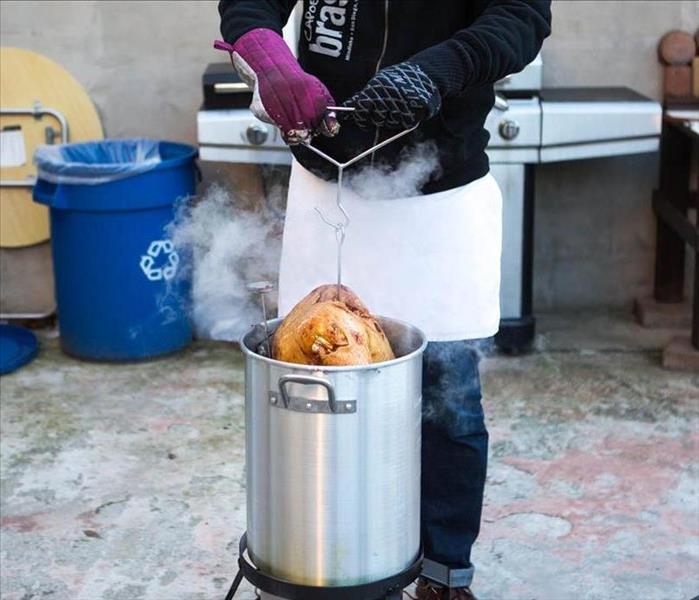 You can get in a "hot mess" with turkey if not prepared.
You can get in a "hot mess" with turkey if not prepared.
Fried turkeys are delicious, but they come with a slew of safety issues. Thousands of fires as well as many deaths and injuries happen each year due to turkey fryer fires. Before you set up your turkey fryer this Thanksgiving, remember these safety tips.
Get the Tips
- Stay Away from The House– Set up the turkey fryer more than 10 feet away from your home and keep children and pets away. Never leave it unattended.
- Find Flat Ground– The oil must be even and steady at all times to ensure safety. Place the fryer on a flat, level surface and carefully gauge the amount of oil needed.
- Use a Thawed and Dry Turkey– Make sure your Thanksgiving turkey is completely thawed and dry. Extra water will cause the oil to bubble furiously and spill over. If oil spills from the fryer onto the burner, it can cause a fire.
- Monitor the Temp– Use caution when touching the turkey fryer. The lid and handle can become very hot and could cause burns. Also be sure to keep track of the oil?s temperature as many fryers do not have their own thermostats.
- Be Prepared– Have a fire extinguisher (multipurpose, dry-powder) ready at all times in the event that the oil ignites.
And if you follow all of these tips, and still have an overly well done turkey and garage, we are here to help make it, Like it never even happened.
Please follow our page, as we continue to explore the benefits of mitigation, and how this approach helps both your clients and your business. Please call us with any questions you have, 715-7057028. Visit our site: https://www.SERVPROstillwateroakdalemahtomedi.com/
3 Workplaces at an Increased Fire Risk
11/6/2020 (Permalink)
 Some workplaces contain materials and systems that make them more susceptible to fires.
Some workplaces contain materials and systems that make them more susceptible to fires.
Some workplaces contain materials and systems that make them more susceptible to fires. If you manage a commercial space that is at risk, you must have fire extinguishers and safety designs in place to prevent costly accidents. Understanding some of the potential dangers in your workplace will also help you stay safe. Here’s a guide to some of the spaces that are at an increased risk and how to minimize it.
Commercial Establishments That Are at Risk for Fires
- Restaurants
Most restaurants use open flames and produce a lot of cooking grease and oils. This combination is a common cause of many residential and commercial fires. To avoid issues, always have fire extinguishers handy and ensure employees know how to operate them. You must also have your restaurant’s grease trap and hood cleaned (6 Steps to a Professional Kitchen Hood Cleaning) to avoid accumulation and promote ventilation. Staff should never leave open flames unattended.
- Offices
fire extinguishers Paper documents, electronics, as well as overloaded power strips, outlets, and circuits leave offices at risk for fire. A damaged power cable or overheated strip could create a spark, so always inspect your wiring for damage and excess heat. If desks at your workplace have been relying on extension cords in the long term, consider having additional outlets installed. You should also have fire extinguishers placed throughout the office, as well as alarm protection systems (Commercial Fire Sprinkler Systems Myths). A workplace safety plan should also be in place so employees know what to do in an emergency situation.
- Industrial Plants
Several flammable chemicals are used in manufacturing and material treatment, which is why industrial plants are at increased fire risk. Combustible materials such as fuel need to be carefully monitored and stored in a well-ventilated room. Employees should be trained to handle chemicals and operate any machinery that involves open flames. Having a fire suppression system in place will ensure issues are quickly spotted and dealt with. If you manage a warehouse, have fire safety maintenance professionals routinely test your equipment to make sure it’s operational.
Should you have a fire and are in need of clean up services or just have questions about the process, call SERVPRO of The Saint Croix Valley at 715-381-2266. Our staff of professionals are available 24 hours a day, 7 days a week for emergency commercial and residential mitigation services.
Fire Prevention Tips
10/22/2020 (Permalink)
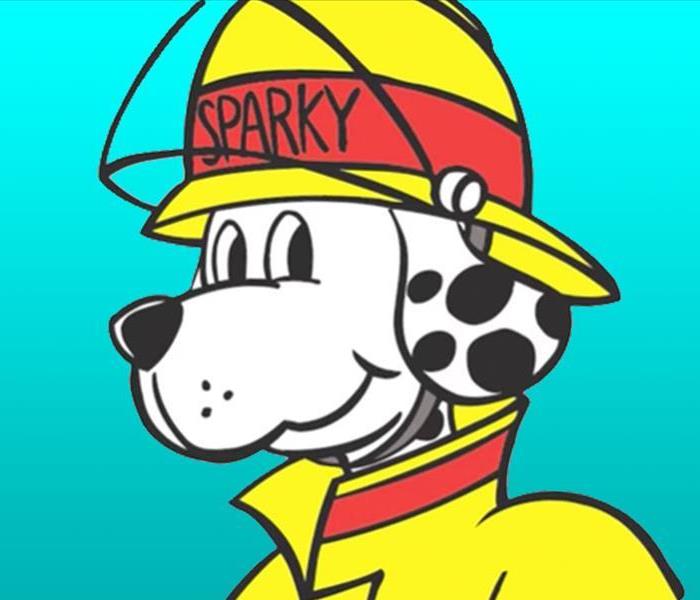 October brings us fire prevention week.
October brings us fire prevention week.
October brings us fire prevention week. With that, we at SERVPRO, wanted to take a moment to remind you of a few things to keep an eye on to prevent fires this fall and into the winter.
- Watch your cooking
Stay in the kitchen when you are frying, grilling, or broiling food. If you must leave, even for a short time, turn off the stove. - Give space heaters space
Keep fixed and portable space heaters at least three feet from anything that can burn. Turn off heaters when you leave the room or go to sleep. - Smoke outside
Ask smokers to smoke outside. Have sturdy, deep ashtrays for smokers. - Keep matches and lighters out of reach
Keep matches and lighters up high, out of the reach of children, preferably in a cabinet with a child lock. - Inspect electrical cords
Replace cords that are cracked, damaged, have broken plugs, or have loose connections. - Be careful when using candles
Keep candles at least one foot from anything that can burn. Blow out candles when you leave the room or go to sleep. - Have a home fire escape plan
Make a home fire escape plan and practice it at least twice a year. - Install smoke alarms
Install smoke alarms on every level of your home, inside bedrooms and outside sleeping areas. Interconnect smoke alarms throughout the home. When one sounds, they all sound. - Test smoke alarms
Test smoke alarms at least once a month and replace batteries once a year or when the alarm “chirps” to tell you the battery is low. Replace any smoke alarm that is more than 10 years old. - Install sprinklers
If you are building or remodeling your home, install residential fire sprinklers. Sprinklers can contain and may even extinguish a fire in less time than it would take the fire department to arrive.
Candle Safety
10/22/2020 (Permalink)
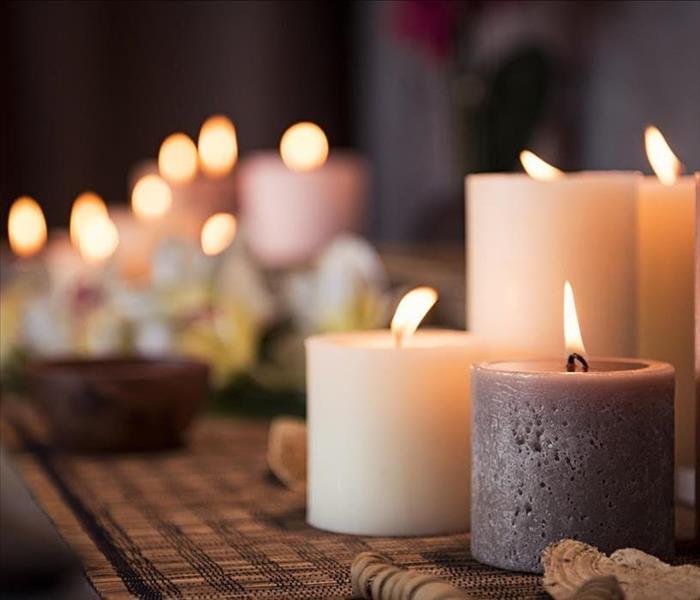 There’s something about the flickering glow and scent of candles that keeps us buying more.
There’s something about the flickering glow and scent of candles that keeps us buying more.
There’s something about the flickering glow and scent of candles that keeps us buying more.
Unfortunately, lit candle use is also the cause of many preventable home fires. FEMA estimates that there are more than 15,000 home candle fires every year, many resulting in injury or even death. More than half of these fires start because the candles are too close to combustible materials, which is something that can be easily preventable.
Here are a few candle safety tips to review before you light your next candle:
1. Burning candles should never be left unattended.
2. Keep candles away from anything flammable.
3. If your candle is in a candle holder, it should be sturdy enough to avoid being easily knocked over.
4. Candles should be placed where children and pets can’t reach them.
5. The National Candle Association recommends that candlewicks be trimmed to ¼ inch each time before burning. Long wicks can cause uneven burning and dripping.
6. Keep the pool of wax in the candle clear of debris such as wick trimmings.
7. Read and follow the manufacturer’s instructions for candle use. Most candles should be burned for only a couple of hours at a time.
8. Extinguish candles with a candle snuffer rather than blowing them out, as hot wax can splatter.
4 FAQ on Flammable Gas Safety
4/13/2020 (Permalink)
Propane, hydrogen, butane, ethylene, and other flammable, compressed gases present hazards without the right precautions. While fire safety maintenance will help you avoid trouble, you should also understand how to handle and store gas cylinders. Here’s what to know to keep your facility safe.
Common Questions About Flammable Gases
Can I store containers outdoors?
Yes, as long as the manufacturer's instructions permit outdoor storage. Closely follow the guidelines on all cylinder labels. If a label is missing or damaged, you may need to call the manufacturer.
Cylinders stored outdoors must remain upright on compacted, level surfaces. These should be far away from drainage areas, manholes, or other openings. Use an open-sided enclosure with a weatherproof roof to protect the cylinders from sunlight, snow, and other elements.
What about indoor storage?
fire safety maintenanceIndoor storage is also possible as long as you follow all ventilation guidelines outlined by the manufacturers. Store the gases in a separate building that has noncombustible structural components that resist fire for at least 120 minutes. The area should also have lightweight roofing and explosion vents.
Keep gases on the ground floor and place electrical wiring outside of the building to further limit the chances of fires and explosions.
What are the best materials for securing the cylinders?
Unrestrained cylinders could roll away or fall, so you must keep them secure. Use specialized chains, straps, and bungee cords. Refer to the label or manufacturer’s instructions for information on how to secure the units.
How should I handle the cylinders?
Inspect all items before handling. Do not handle any cylinder that has dents, severe corrosion, or other visible signs of damage. Avoid contact if you notice grease, oil, solvent, or dirt, which could cause explosions.
Open cylinder valves only with the manufacturer-provided key, and ensure you are working away from all heat sources. You must also have fire safety equipment within reach and follow all other manufacturer’s guidelines, such as opening specific valves if you’re working with an irritating gas.
Fire Damage Restoration Process
4/13/2020 (Permalink)
Every fire damage event is a little different, and requires a unique solution, but the general process stays the same. The steps listed below illustrate our process for the “typical” fire damage emergency.
Step 1: Emergency Contact
The restoration process begins when you call the SERVPRO Customer Care Center, which is staffed 24 hours a day. Our specialist will ask a series of questions regarding the fire damage event that will help us dispatch the nearest SERVPRO Franchise Professional with the appropriate equipment and resources.
Step 2: Inspection and Fire Damage Assessment
Our Professionals will carefully inspect and test adjoining rooms of your property to determine the extent of the fire, smoke, and soot damage. This step is crucial to developing a plan of action.
Step 3: Immediate Board-Up and Roof-Tarp Service
Fire damage can often compromise windows, walls, and roofs. To maintain security and to protect against further damage, the SERVPRO Franchise Professional can board up missing windows and walls and place tarps on damaged roofs.
Step 4: Water Removal and Drying (if water damage is present)
The water removal process begins almost immediately and removes the majority of the water. They will then use dehumidifiers and air movers to remove the remaining water and complete the drying process.
Step 5: Removal of Smoke and Soot from All Surfaces
The SERVPRO Franchise Professionals use specialized equipment and techniques to remove smoke and soot from ceilings, walls, and other surfaces.
Step 6: Cleaning and Sanitizing
They will clean all of the restorable items and structures that were damaged by the fire. They use a variety of cleaning techniques to restore your belongings to pre-fire condition. They’re also trained to remove odors using industrial air scrubbers and fogging equipment.
Step 7: Restoration
Restoration is the final step—getting your home or business to its pre-fire condition. Restoration may involve minor repairs, such as replacing drywall, painting, and installing new carpet; or it may entail major repairs such as the reconstruction of various areas or rooms in a home or business.
Why Fire Safety Training Matters for Your Company
4/13/2020 (Permalink)
Even if your office is fully stocked with alarms, sprinklers, and extinguishers, these safety measures are less effective if your workforce doesn’t understand emergency procedures. By implementing routine fire drills and training from a professional, you’ll prepare all your employees to stay safe during an emergency. Here is more information about why fire safety maintenance is necessary.
How Should Your Employees Be Trained for Fire Safety?
To contain small fires, such as microwave accidents, every employee should know how to use a fire extinguisher. A brief training demonstration could save your company from costly property damage and potential staff endangerment. For larger fires that can’t be eliminated with an extinguisher, everyone should know the quickest way to evacuate the building.
To prevent injuries, you must undergo fire drills, which will force your staff to act like an emergency is occurring in your building. Every employee should move quickly toward the nearest exit, helping those who may have limited mobility. By teaching your workforce to act calmly under pressure, you’ll minimize the chances of chaotic rushing that could lead to trampling.
Most importantly, having an evacuation plan is required by the Occupational Safety and Health Administration, and nearly all businesses should have regular fire drills as per the state of Wisconsin fire code. A professional will help you comply with the law.
4 Types of Fire Alarms for Your Business
4/13/2020 (Permalink)
You only want the best when it comes to choosing a fire detector for your commercial building. Fire alarm protection systems safeguard your property against smoke and fire threats, preventing injuries and damage. There are many types of alarms available on the market. To help you make an informed decision, here are some of the most popular choices and how they work.
Different Fire Alarm Protection Systems
Heat Detectors
Heat detectors respond when a fire raises the temperature of a room. These alarms are triggered once temperatures rise above 135 degrees Fahrenheit. Since they only function as a heat-sensitive unit, they're meant to supplement smoke alarms to improve fire detection. For the best response, have heat detectors installed in areas where fumes and smoke are likely to collect, such as rooms without windows.
Ionization Smoke Alarms
Fire alarm protection system Ionization smoke alarms are best at detecting abrupt fires. The ionization chambers inside these fire alarm protection systems contain traces of radioactive particles that trigger when smoke enters the unit. Since these alarms are more sensitive to smoke, they can create false positives when someone burns their food in a microwave, for example.
Photoelectric Smoke Alarms
Photoelectric alarms are useful for detecting smoldering fires that create a lot of smoke. The inner components contain light beams aimed toward sensors. When smoke particles enter the chamber, the light beam inside is refracted from the sensor, activating the alarm. It's recommended placing these fire protection systems in areas with low dust buildup, since dust particles are known to accidentally trigger them.
Dual-Sensor Smoke Alarms
When you combine the sensors from ionization and photoelectric fire detection systems, you get dual-sensor smoke alarms. These types of fire alarms protect your building from both smoldering and lightly flaming fires. Since most models are designed to activate when both sensors are triggered, you'll get less false alarms than with single-sensor fire alarms. However, dual-sensor units may respond slower, causing a delay in response if a fire occurs.
3 Workplaces at an Increased Fire Risk
4/13/2020 (Permalink)
Some workplaces contain materials and systems that make them more susceptible to fires. If you manage a commercial space that is at risk, you must have fire extinguishers and safety designs in place to prevent costly accidents. Understanding some of the potential dangers in your workplace will also help you stay safe. Here’s a guide to some of the spaces that are at an increased risk and how to minimize it.
Commercial Establishments That Are at Risk for Fires
- Restaurants
Most restaurants use open flames and produce a lot of cooking grease and oils. This combination is a common cause of many residential and commercial fires. To avoid issues, always have fire extinguishers handy and ensure employees know how to operate them. You must also have your restaurant’s grease trap and hood cleaned(6 Steps to a Professional Kitchen Hood Cleaning) to avoid accumulation and promote ventilation. Staff should never leave open flames unattended.
- Offices
fire extinguishers Paper documents, electronics, as well as overloaded power strips, outlets, and circuits leave offices at risk for fire. A damaged power cable or overheated strip could create a spark, so always inspect your wiring for damage and excess heat. If desks at your workplace have been relying on extension cords in the long term, consider having additional outlets installed. You should also have fire extinguishers placed throughout the office, as well as alarm protection systems(Commercial Fire Sprinkler Systems Myths). A workplace safety plan should also be in place so employees know what to do in an emergency situation.
- Industrial Plants
Several flammable chemicals are used in manufacturing and material treatment, which is why industrial plants are at increased fire risk. Combustible materials such as fuel need to be carefully monitored and stored in a well-ventilated room. Employees should be trained to handle chemicals and operate any machinery that involves open flames. Having a fire suppression system in place will ensure issues are quickly spotted and dealt with. If you manage a warehouse, have fire safety maintenance professionals routinely test your equipment to make sure it’s operational.
Should you have a fire and are in need of clean up services or just have questions about the process, call SERVPRO of Central Washington County at 651-705-7028. Our staff of professionals are available 24 hours a day, 7 days a week for emergency commercial and residential mitigation services.





 24/7 Emergency Service
24/7 Emergency Service















